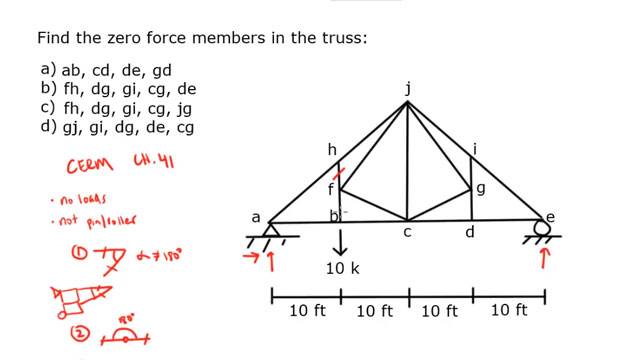
How to determine zero force members in truss structures

This construction video provides useful information on how to make solution for zero force members in a truss. The video is very useful for the students who will appear in PE exam.
Occasionally in truss structure, under specific loading configuration, there exist some members that do not bear the load. These members are defined as zero-force members and generally utilized to enhance the strength of truss as well as deliver future supports when the implemented loading configuration is modified. The method of inspection is applied to define these zero-force members. Under this method, every joint in a truss structure is analyzed one by one.
Given below some useful tips to determine the zero-force members in truss structures:
- If a joint contains only two members without any external load or support, then those two members belong to zero-force members.
- If a joint contains only two members and is loaded, then when the line of action of consequential force from applied loads at the joint lies in the same straight line with one of the members then the other member belongs to a zero-force member. If the consequential force at the joint is not lying in the same straight line with either member, then both members do not belong to zero-force members.
- If a joint contains members without any external load and/or support, then when two of the members are lying in the same straight line then the non-collinear member belongs to a zero-force member.
In brief, zero-force members are detectable at a joint containing two members with or without applied load(s) and at a joint containing three members in which there does not exit any applied load. The objective is to focus on the specific joint being examined.


